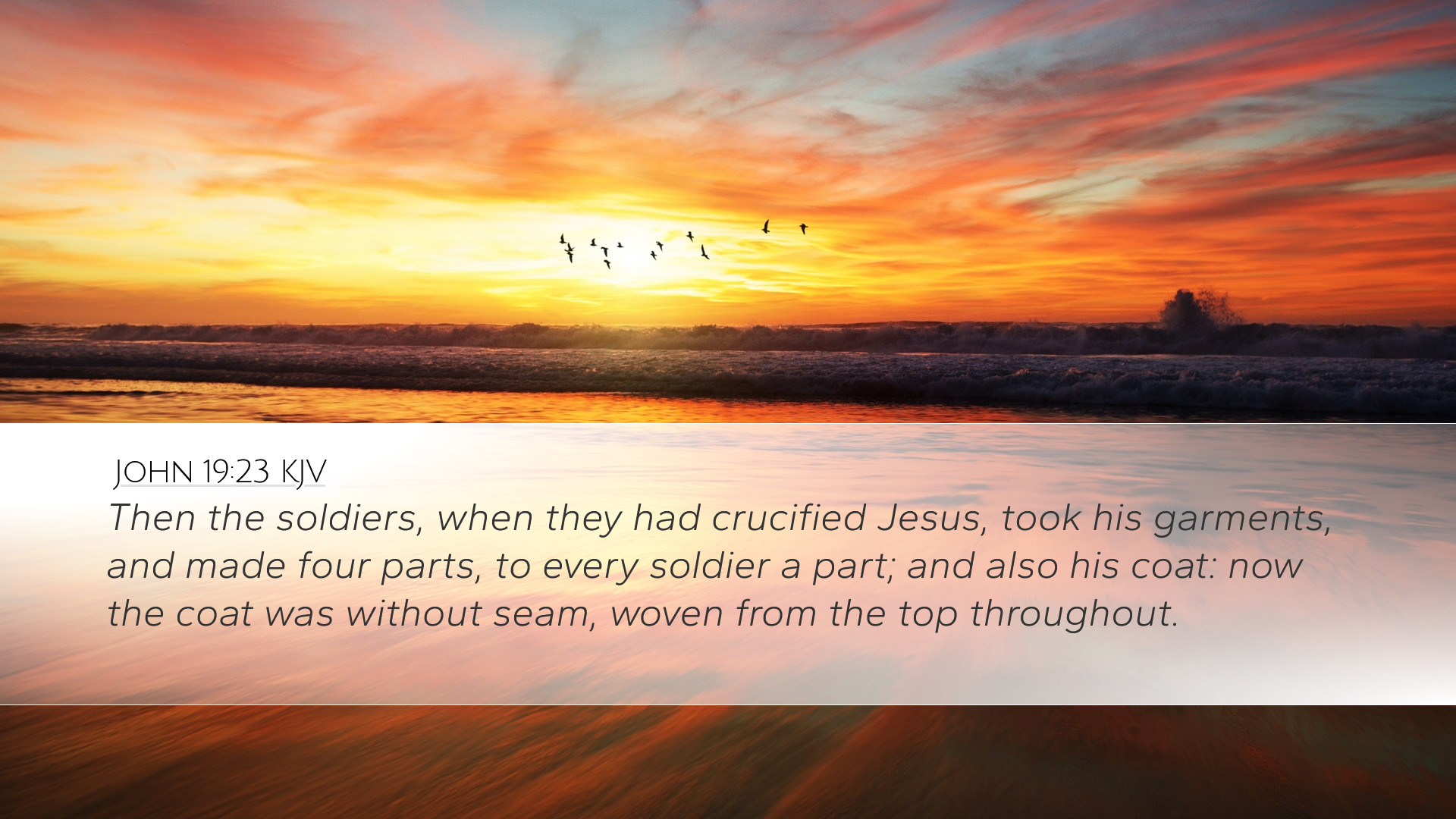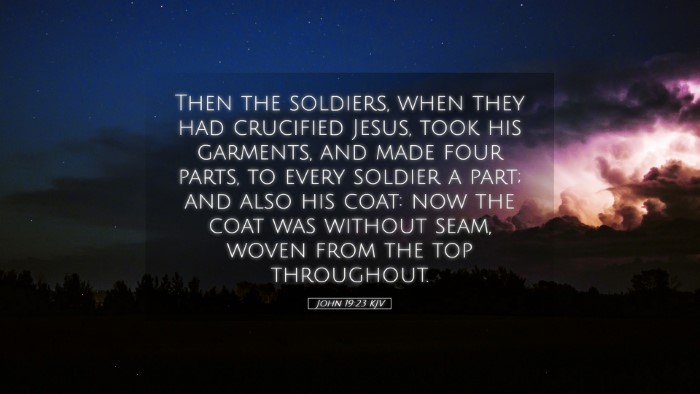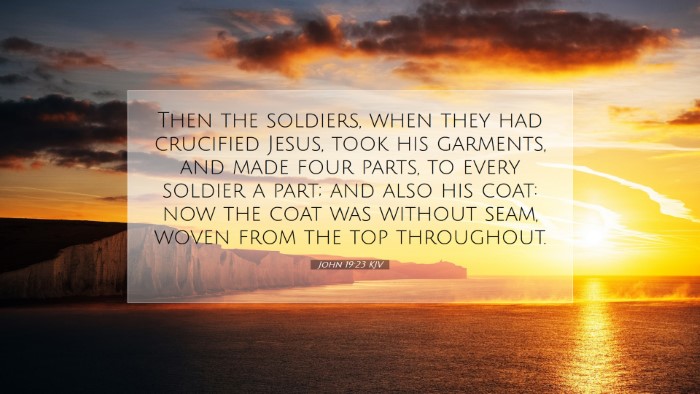Commentary on John 19:23
Verse: "Then the soldiers, when they had crucified Jesus, took His garments and made four parts, to every soldier a part; and also His coat: now the coat was without seam, woven from the top throughout."
Introduction
This verse occurs at a critical moment in the narrative of the crucifixion of Jesus Christ. The actions of the soldiers are steeped in significance and unveil deeper theological truths about the sacrificial nature of Christ's death, the fulfillment of prophecy, and the heart of human depravity. Drawing from commentary by renowned theologians, this examination will delve into the subtleties of this passage.
Exegesis of the Text
In this verse, we see the practical actions of the soldiers who have just crucified Jesus. Their attention shifts to dividing His garments, a trivial matter compared to the profound event that has just taken place.
Reference to Psalm 22:18
Matthew Henry emphasizes the prophetic dimension of this action, connecting it to Psalm 22:18, where it was foretold: “They part my garments among them, and cast lots for my vesture.” This early anticipation of events depicts the divine orchestration through which the Messiah's sufferings and subsequent humiliation were foretold long before.
The Nature of the Garments
Albert Barnes provides insights into the nature of the garments. He notes that the coat was of particular significance due to its seamless design, symbolizing unity and perfection. This notion aligns with the theological interpretation of Christ as the perfect sacrifice, without blemish, definitive in His role as the High Priest.
Significance of Four Parts
The division of His garments into four parts is another aspect worthy of exploration. Adam Clarke draws attention to the soldiers' systematic approach to the spoils of the crucifixion. Each soldier received a part, illustrating the thoroughness of their cruelty and indifference to the momentous event they were partaking in. This lack of reverence showcases human sinfulness at its peak, juxtaposed with the divine grace that later unfolds through the resurrection.
Theological Reflections
Human Indifference to Divine Suffering
Henry asserts that the soldiers’ actions exhibit a remarkable insensitivity to the significance of the event. Their focus on material gain amid the suffering of the Son of God embodies the blindness of humanity, which prioritizes physical over spiritual realities. This depiction serves as a reminder to contemporary readers of the need for spiritual awakening and recognition of Christ’s sacrifices.
Christ's Fulfillment of the Law
Clarke expands on the stage set by this moment, indicating that, through His death, Jesus fully meets the requirements of the Old Testament sacrificial system. The seamless coat symbolizes a priestly garment, hinting at His role as the ultimate High Priest who mediates between God and humanity. This perspective encourages pastors and theologians to draw connections between the Old and New Testaments, showcasing the unity of Scripture.
Implications for Believers
Barnes further reflects on the implications of this passage for believers today, emphasizing the importance of recognizing what was sacrificed for humanity's sins. Each time they approach communion or discuss the grace of Christ, they should remember the contempt shown at the crucifixion and reflect on their personal responses to His suffering.
Application
- Awareness of Sinfulness: The actions of the soldiers serve as a stark reminder of the human tendency to overlook the spiritual for the temporary.
- Recognition of Sacrifice: Believers are encouraged to ponder the depth of the sacrifice Jesus made and to respond with gratitude and commitment to His cause.
- Integration of the Old and New Testaments: The seamless coat and the fulfillment of prophecy challenge scholars to explore how the Old Testament foreshadows New Testament realities.
Conclusion
John 19:23, while revealing a seemingly mundane act by soldiers, unfolds layers of theological significance that challenge the heart and mind. It serves as a lens through which we can view the fulfillment of Scripture, the nature of Christ, and the response required from us as followers of Him. As we reflect upon this passage, may it stir within us a deeper understanding of God’s grace, a recognition of our human frailty, and an unwavering dedication to the call He places upon our lives.


